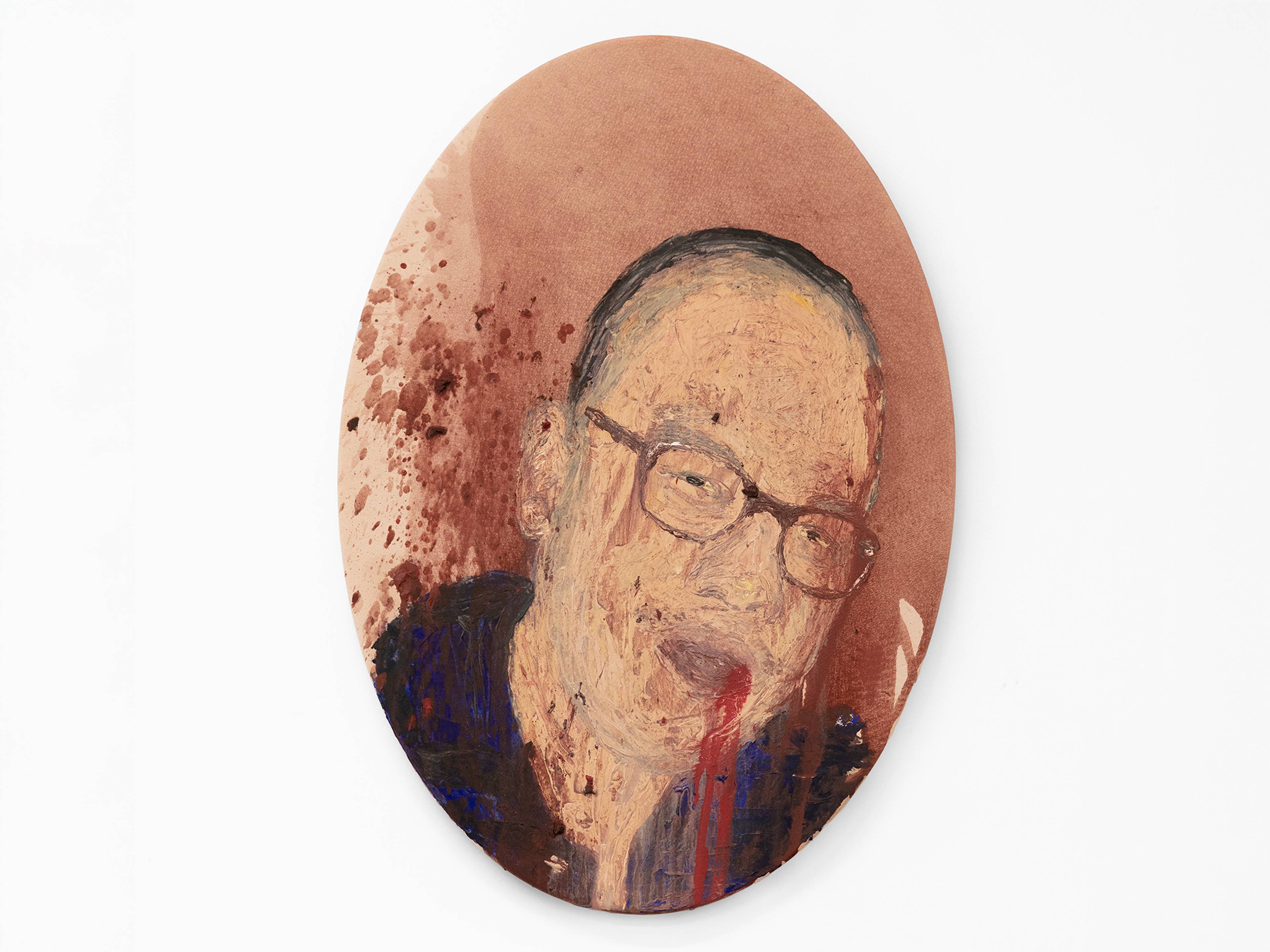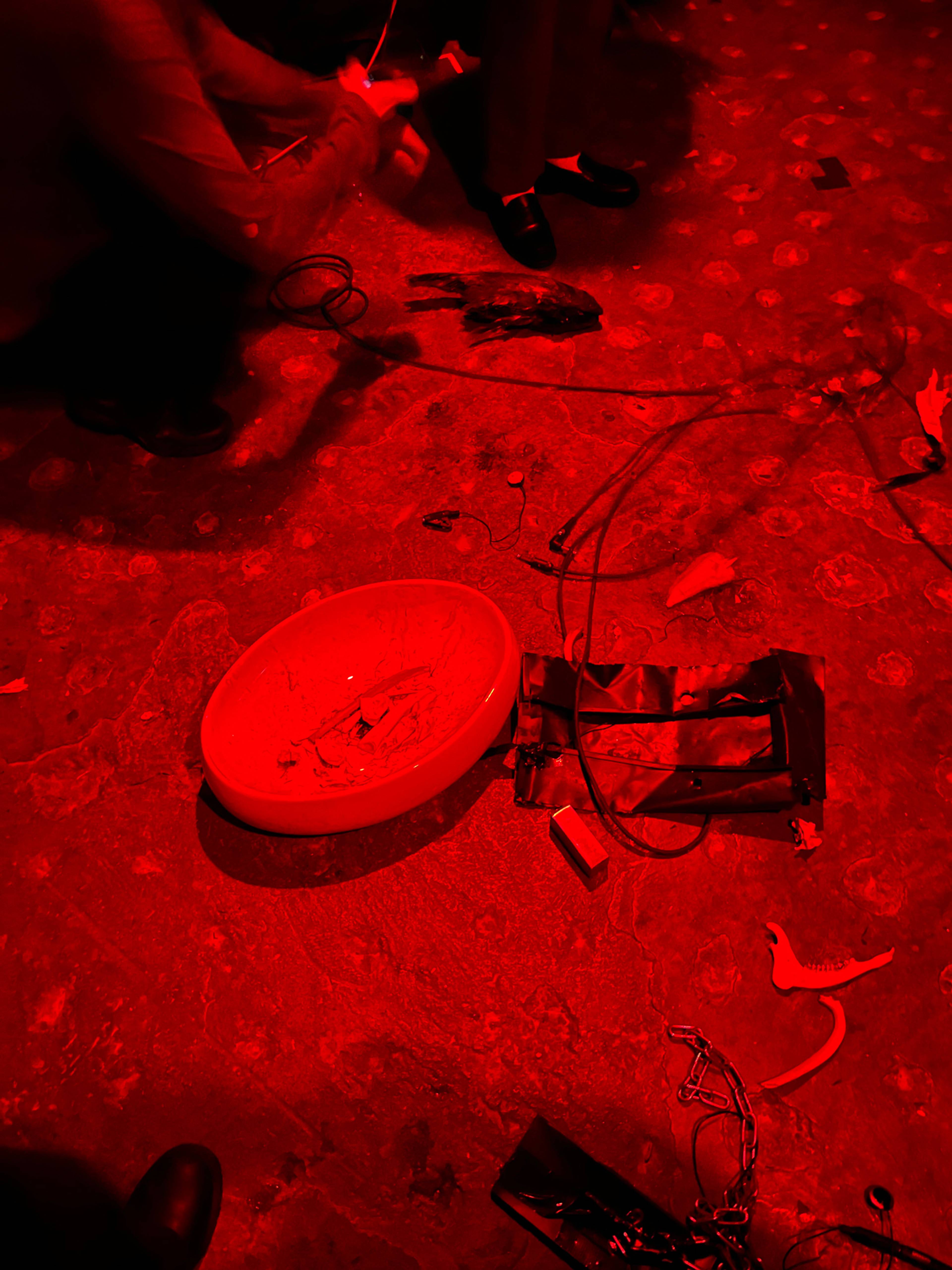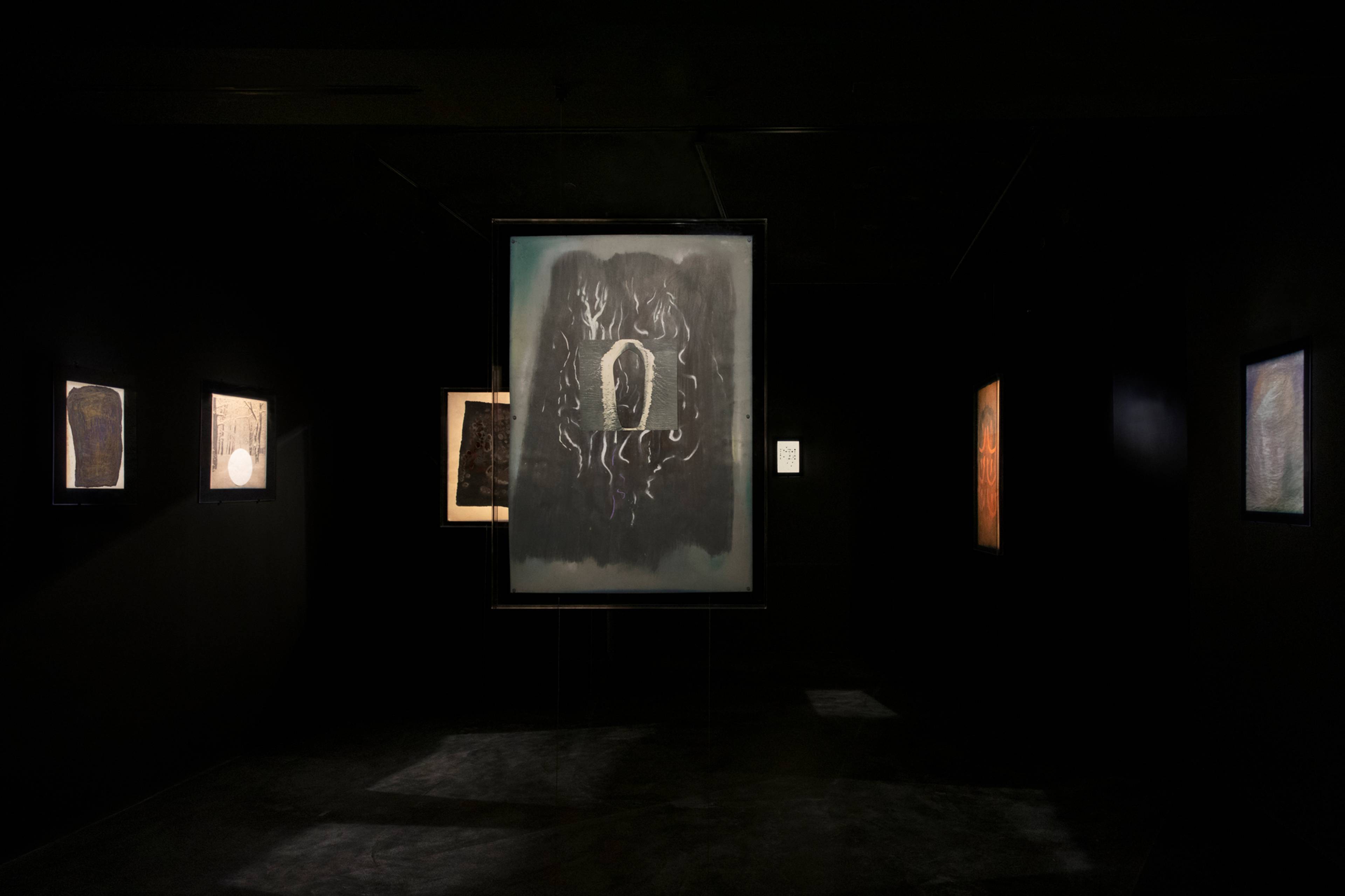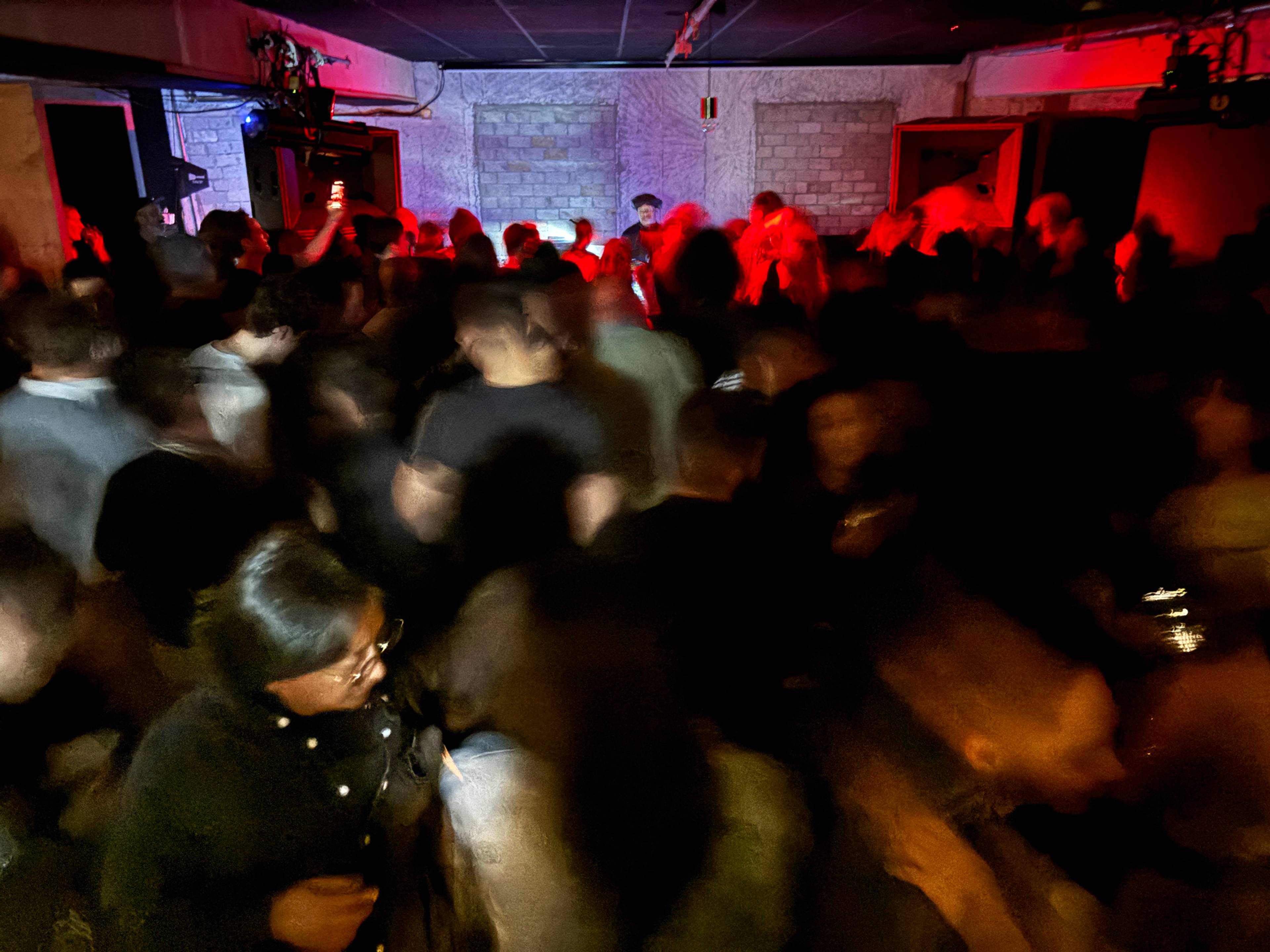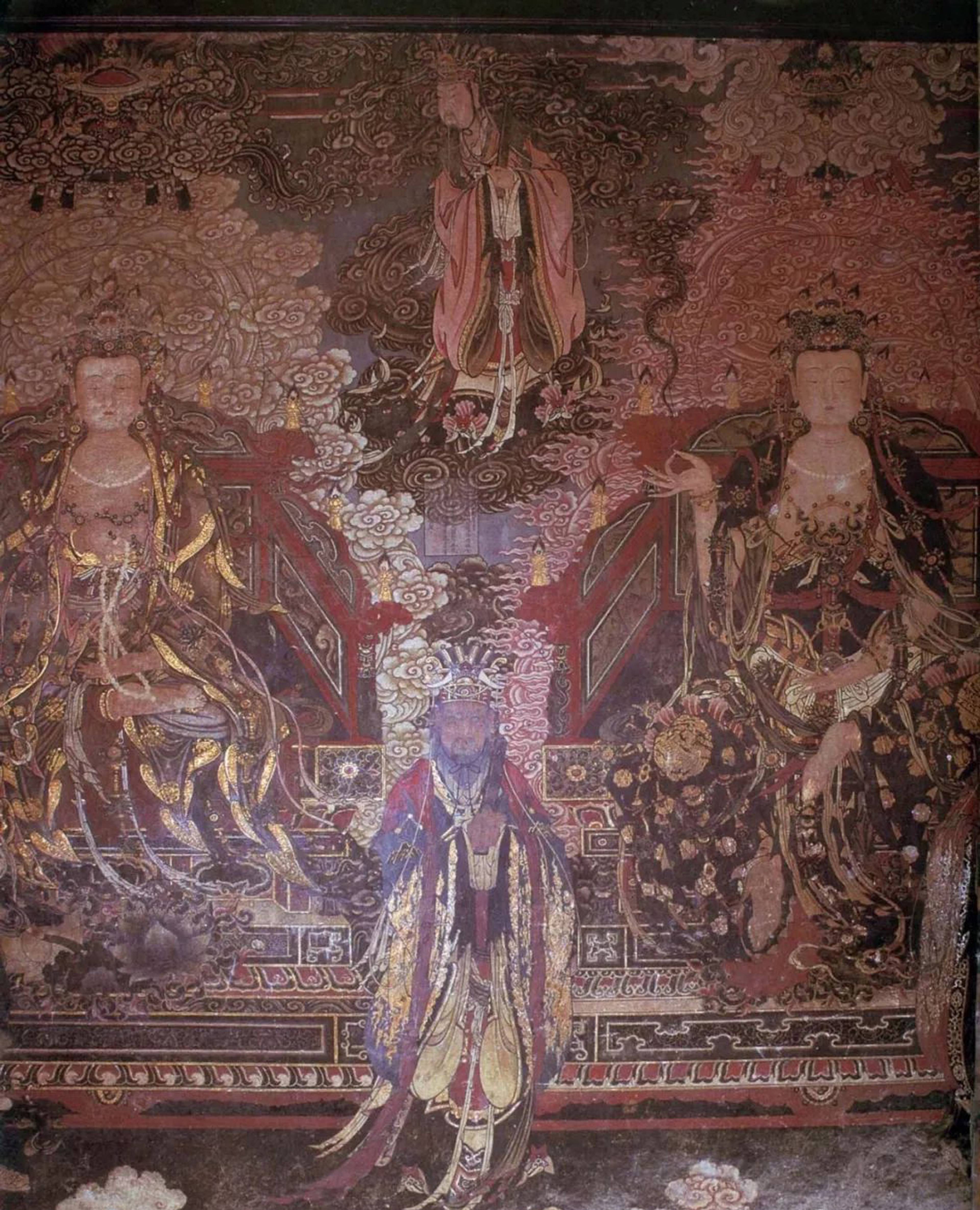When I first moved back to Hong Kong as an adult in 2023, a new friend tried to recommend me cool things to do: “During a performance at the closing party for Vunkwan Tam’s show at Empty last year, [owner of noise label Mouhoi] Cedric Ng punched a sink until his hands bled.” They knew what to say, but they didn’t have to try so hard. In Hong Kong, historically an entrepot dominated by blue-chip galleries, unwieldy semi-private institutions, and a constellation of independent art spaces surviving precariously under colossal real estate conditions, Stephen Cheng’s Empty Gallery occupies an eclectic yet somehow exacting niche. It’s where minimalist experimental music, Japanese conceptual art and its heirs, and sculptural and filmic practices at the forefront of the Asian diaspora converge in a renovated industrial space notorious for its dark, cavernous interior. Friends who don’t otherwise care for contemporary art bring themselves to the hour-long queue for the gallery’s annual rave, and its artists have found genuine interlocutors within an industry that does not always afford them time.
In the past five years, Hong Kong has weathered a watershed social movement, a pandemic-induced economic downturn, and, following the government’s authoritarian turn in 2020, mass outward migration. But, like the contrast between the gallery’s obscured, somewhat deterrent entrance and the public sex that did happen by a stairwell at one Empty rave, any reconciliation of wider spiritual depletion and a latent, resilient energy proves enigmatic. What does it take to continue imagining an alternative terrain for art-making in a pressurized, market-driven world? Coming from a prominent Hong Kong shipping family, and educated in film history and photography at Harvard, Cheng is frank about being in a rarefied position to support artists and conjure new orbits of connections. Now in its 10th year of materializing what began as a meditative vision, he reflects on the project’s coming of age, the systemic demands of the contemporary art market, and the essential questions that keep exhibitions alive.
Aeon Universe and Cedric Ng at the closing party of Vunkwan Tam’s exhibition “F,” 12 Nov 2022
Jaime Chu: The year was 2015. Where were you? And why did you decide to start a gallery?
Stephen Cheng: At that time, I was meditating heavily every day, and it was during meditation that I saw a sort of black cube in my mind. I knew I had to build it before I even knew what it was; only later did I figure out it might be a gallery. Then I had to learn how to operate one, how the art world is structured, how to navigate it – I didn’t know any of that stuff. I just wanted to build this space and fill a kind of void.
JC: How would you describe Empty’s identity one decade in?
SC: For the first few years, you’re not really sure if you exist or not, if this thing that you’re trying to conjure is just propped up by sheer will. We were a small team responsible for dreaming this space, each of us imagining a place we would want to find, to be a part of.
At a certain point, maybe a couple years ago, you’ve been doing it for long enough – and suddenly, you do exist. You’ve become, and you have an identity. It’s a difficult moment, because then you have a responsibility for what you’ve built, but you also have an instinct to move away from it, to not become too fixed. I think we’re just past that moment now, and hopefully heading back into the unknown.
Sometimes, something can be a really good idea, but you’re not sure if you feel it or not – if you want to feel it but haven’t actually felt it yet.
JC: What moments indicated to you that you were on the right track, that you were doing the right thing?
SC: More audience, more attendance. At the beginning, very, very few people came. We used to sit in the office and guess the number. Slowly, people came to know us – I think it actually happened first through experimental music, which we programmed a lot of early on. It’s a small world with no money in it, and word began to circulate because it was unusual that there was a space in Hong Kong like that, and things sort of grew from there. There were also milestones like participating in the galleries sector of Art Basel in Switzerland, participating in the Venice Biennale, or making our first sale to a major museum, which, as a team, you feel proud of.
JC: One unique feature about the Empty model is that your senior director, Alex Lau, is not based in Hong Kong. How does that work?
SC: It works great, even if it wasn’t a deliberate thing at first. He and I had been having a conversation for many years about art, film, and music, and the gallery was its natural continuation; he just happened to be in New York. Alex is brilliant and hugely responsible for where we are now, and the friendships and the artists he has found in New York are foundational to Empty. You always want to be part of a larger conversation, and it’s like having a second space without having one. Also, I think our dialogue being long-distance has added some kind of inter-dimensional frequency or jet lag to the whole project. Again, though, it wasn’t a strategy; it was just what unfolded at the time.
JC: What do you mean by jet lag?
SC: I find the distance to be a kind of drug that alters your experience of reality in quite a strong way!
View of Yutaka Matsuzawa, “Vanishing in the Wilderness,” Empty Gallery, Hong Kong, 2021. Courtesy: Matsuzawa Kumiko and Empty Gallery. Photo: Michael Yu
JC: The gallery is notable for introducing a cosmopolitan mix of experimental and diasporic artists to the region, as well as rigorously, art-historically-minded presentations, such as “Yutaka Matsuzawa: Vanishing in the Wilderness” (2021), co-curated by Reiko Tomii and the late Alan Longino, or Olivia Shao’s “Le Contre-Ciel” (2024). How is the programming conceived?
SC: Very organically. There are things that you want to bring because you love them and you want to share that passion with others, but mostly, the program evolved by allowing one thing to lead to another. Anything you start already has an internal spirit to it. It may be faint in the beginning, but eventually, it finds its own way and leads you to places. Of course, not everything makes sense to show in a black space, nor in Hong Kong, and every show we do is made uniquely for Empty.
JC: Can you describe the feeling you have when something is right for the gallery?
SC: Serendipity? Or destiny? You just kind of know. It’s also like a film sequence, as my friend and mentor, [gallerist] Miguel Abreu, would say. You think about what would be dynamic to cut to next, what would create contradiction or unexpected meaning.
JC: Do you ever doubt your feelings?
SC: Not when I feel them intuitively. But you can get ahead of yourself; it’s not always immediate. Sometimes, something can be a really good idea, but you’re not sure if you feel it or not – if you want to feel it but haven’t actually felt it yet.
Darkness is to an artist what water is to a swimmer. They go to unknown places, to the hidden and the obscure, and reveal something of ourselves and the times we live in.
JC: At this point, what role do you or the gallery play for the artists?
SC: There’s an enormous amount of pressure from the market, and it molds you into a model that is geared towards selling. As a gallery, you try your best to perform that role well for your artists, but at the same time, if you can, it is vital to resist it for them and remain sensitive to the making of art. The conditions necessary for selling art are different from the ones needed to produce it, and as much as you try to help your artists work the system, you need to protect them from it, and create different conditions that respect the rhythm of artists who might take time.
JC: Music is a big part of what you do at Empty. Is there a distinction between a gallery that also does live programming and has a label, as opposed to a live venue that also shows art?
SC: We used to program a lot more live music. The most radical people we’ve worked with are experimental musicians, and they were all so supportive of us from the beginning. There was no distinction or hierarchy between, say, our music shows and art exhibitions. Covid derailed all of that, but we’re getting back into the rhythm. The idea of a live venue, a freewheeling space where anything could happen, has always been more of an inspiration than any commercial gallery. And so many things have happened here in these ten years.
JC: Let’s say the spectrum of human life has happened here.
SC: That’s a big part of what I wanted to give, a place where people can come without knowing what to expect, and to feel like you’re discovering it for yourself.
Shawscape Renegade playing at the annual Empty Gallery rave, 29 Mar 2025
JC: That feels very true to my experience of encountering art, in the sense of always trying to ask, “What is my relationship to this piece right here, right now?” Despite what you know about art history or aesthetics or your past experience with the space, the actual experience is that every encounter is new.
SC: Because every time you are a different person! You’re like, what is that? Where am I? What is going on?
JC: Not every gallery builds the conditions for this to happen.
SC: More than anything else, I was interested in allowing that encounter. Everything else comes afterwards. Which is a lot! There’s knowledge and connoisseurship, and so much else that goes into a more sophisticated and deeper appreciation of art. But there must be that first encounter.
JC: Where else have you felt this way?
SC: A lot of places. I was just in Sichuan last week to see the Huayan Cave, which is a thousand years old. I also visited the Guanyin Temple in Xinjin and looked at the Ming-era Pilu murals under what, I guess, would be the same conditions they were originally appreciated in 1468, half covered in darkness. It was breathtaking. One of the unique qualities of art is that it lasts, and it keeps giving for centuries, millennia even.
Ming-era Bodhisattva murals, Guanyin Temple
JC: How has the notion of the black cube evolved? What other possibilities can you imagine for working with a dark space?
SC: I see what you mean. I feel Empty has evolved from an optical blackness, in which certain things just look good, towards a more metaphysical blackness. If possible, I would like to keep going further in this direction, into an aesthetic of darkness, maybe even by renovating the space, allowing shafts and pools of natural light in, so it’s more palpable and varied. I have always preferred dim places to read, to listen to music, to look at things and appreciate beauty. Darkness is to an artist what water is to a swimmer. They go to unknown places, to the hidden and the obscure, and reveal something of ourselves and the times we live in – which are currently the darkest of all.
___
Richard Hawkins
“The Garden of Loved Ones”
Empty Gallery, Hong Kong
23 Mar – 24 May 2025


